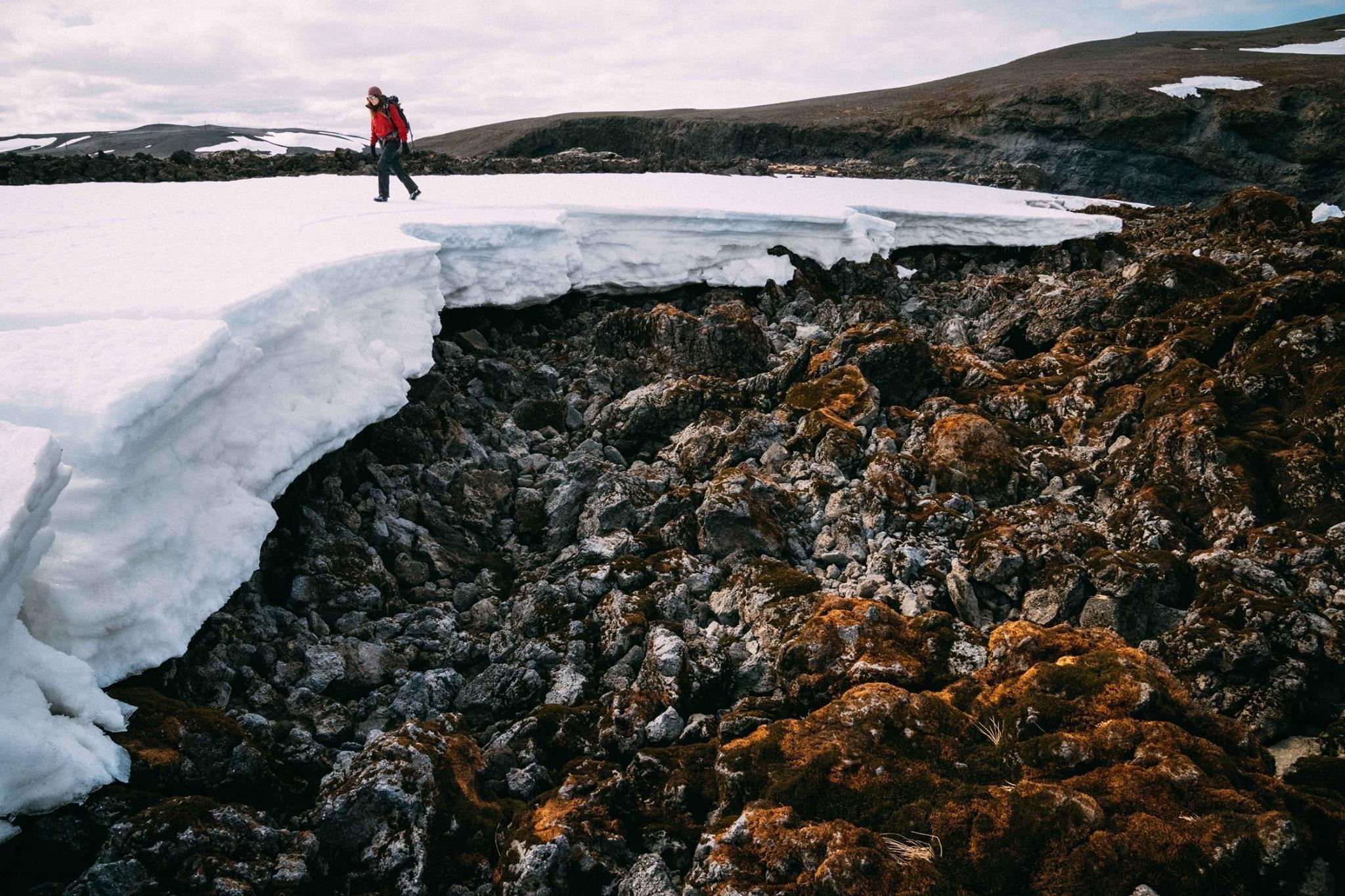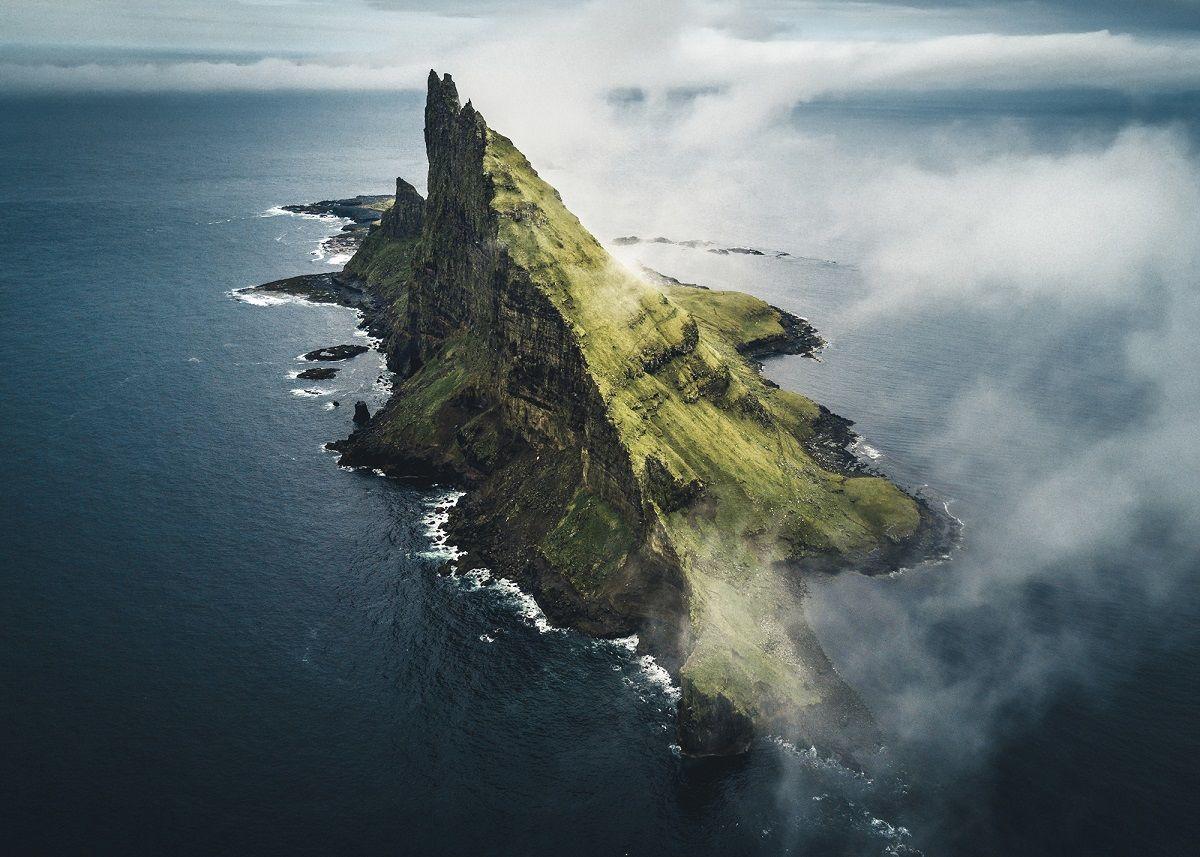After many years of leading guided hiking tours in the Faroe Islands, our June 2025 expeditions delivered some of the most unforgettable conditions we’ve ever experienced in the region.
We were blessed with an amazing crew, calm seas, and nearly perfect weather that allowed us access to every trail we had hoped to hike (a very different story from our Faroe Islands expeditions last year!).
This is our 2025 trip recap of the sailing and hiking in the Faroe Islands – a chain of islands forged by volcanic stone, molded by myths, folklore and crashing surf, adrift in the middle of the North Atlantic Ocean.
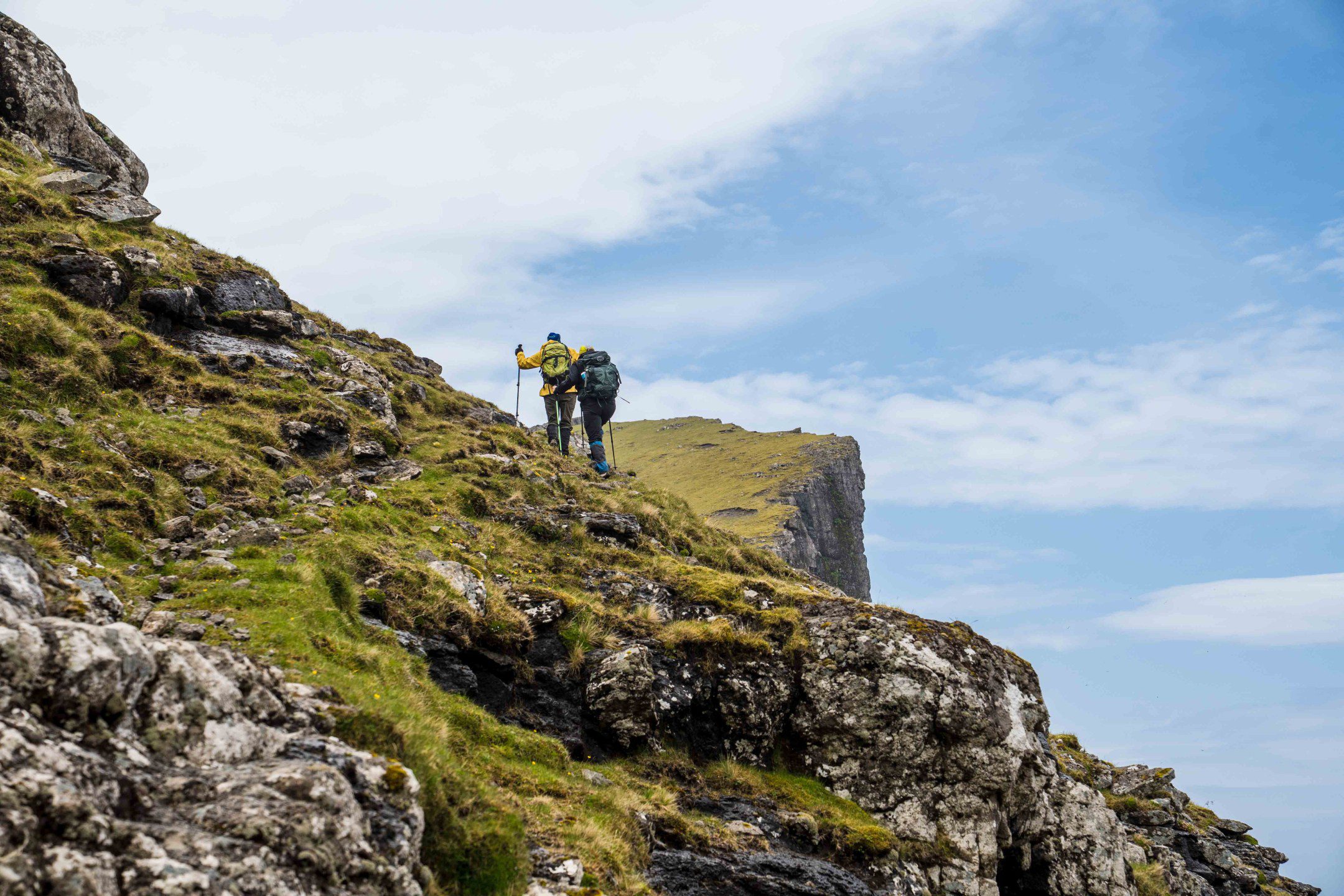
Day 1-2: Vágar and the Village of Bøur
We began our journey on Vágar Island, where the charming turf-roofed village of Bøur sat perched overlooking the desolate Atlantic Ocean, like something from a child’s storybook. For three nights, this was our home – a slow, grounding start that gave us space to settle into the rhythm of the Faroes.
Our first shared meal with the group was prepared in a hjallur – a traditional Faroese drying shed used for fermenting and air-drying meat and fish, particularly lamb and cod. Built with slatted walls to let the wind pass through, the hjallur allows nature to do the fermenting work, transforming local ingredients into something uniquely Faroese.
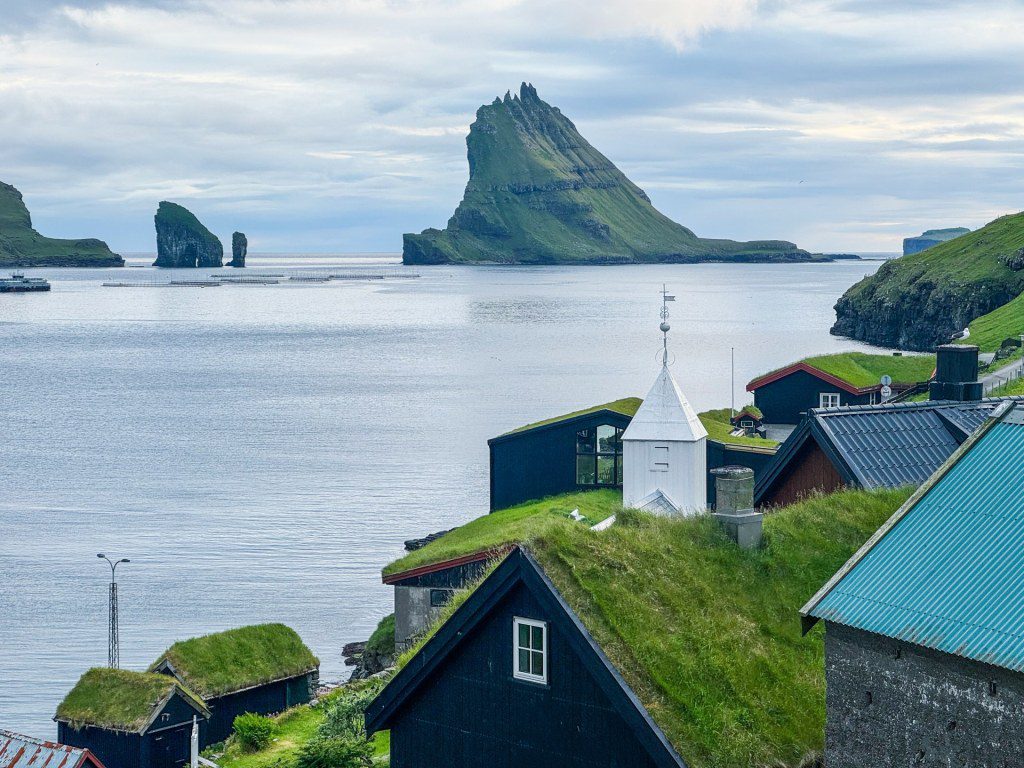
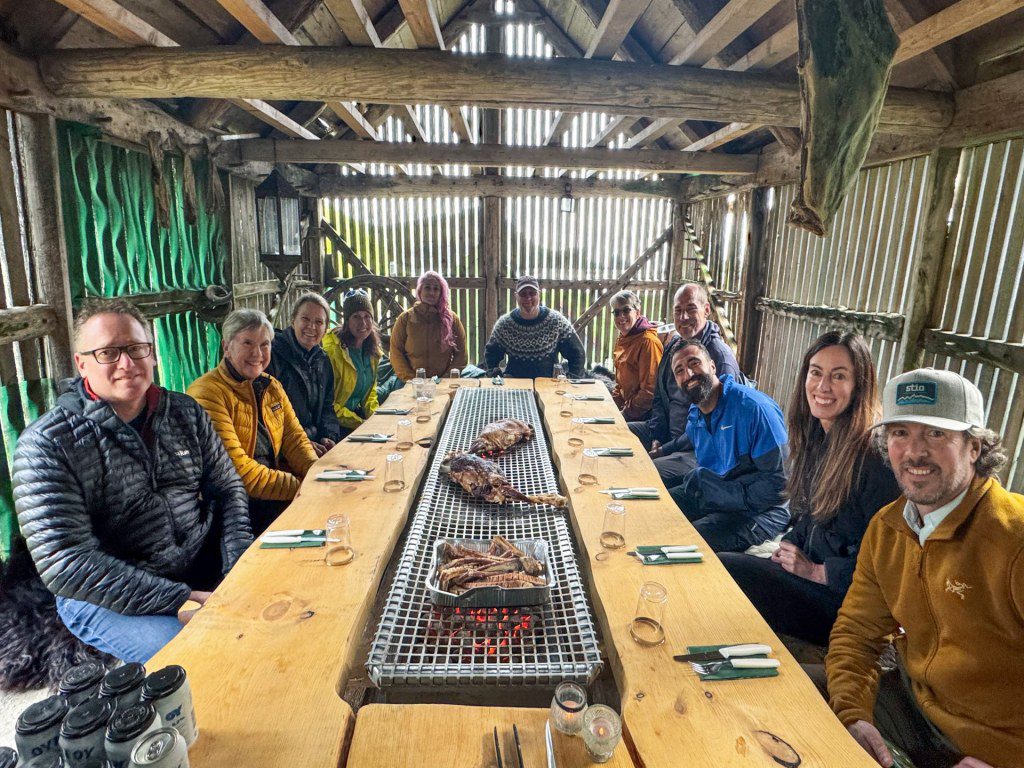
During our stay on Vágar, we set out on two hikes – the Trælanípan viewpoint, which winds along a dramatic cliffside where Sørvágsvatn Lake eventually appears almost like an optical illusion floating high above the ocean below.
The second was the famed Postman’s Trail, a historic route between villages once used as a mail delivery route for letters and supplies in all weather. Today, it still carries messages, but in the form of footsteps and quiet awe. Along the way, we passed the striking Múlafossur waterfall that cascades off the cliffside and down into the ocean below.
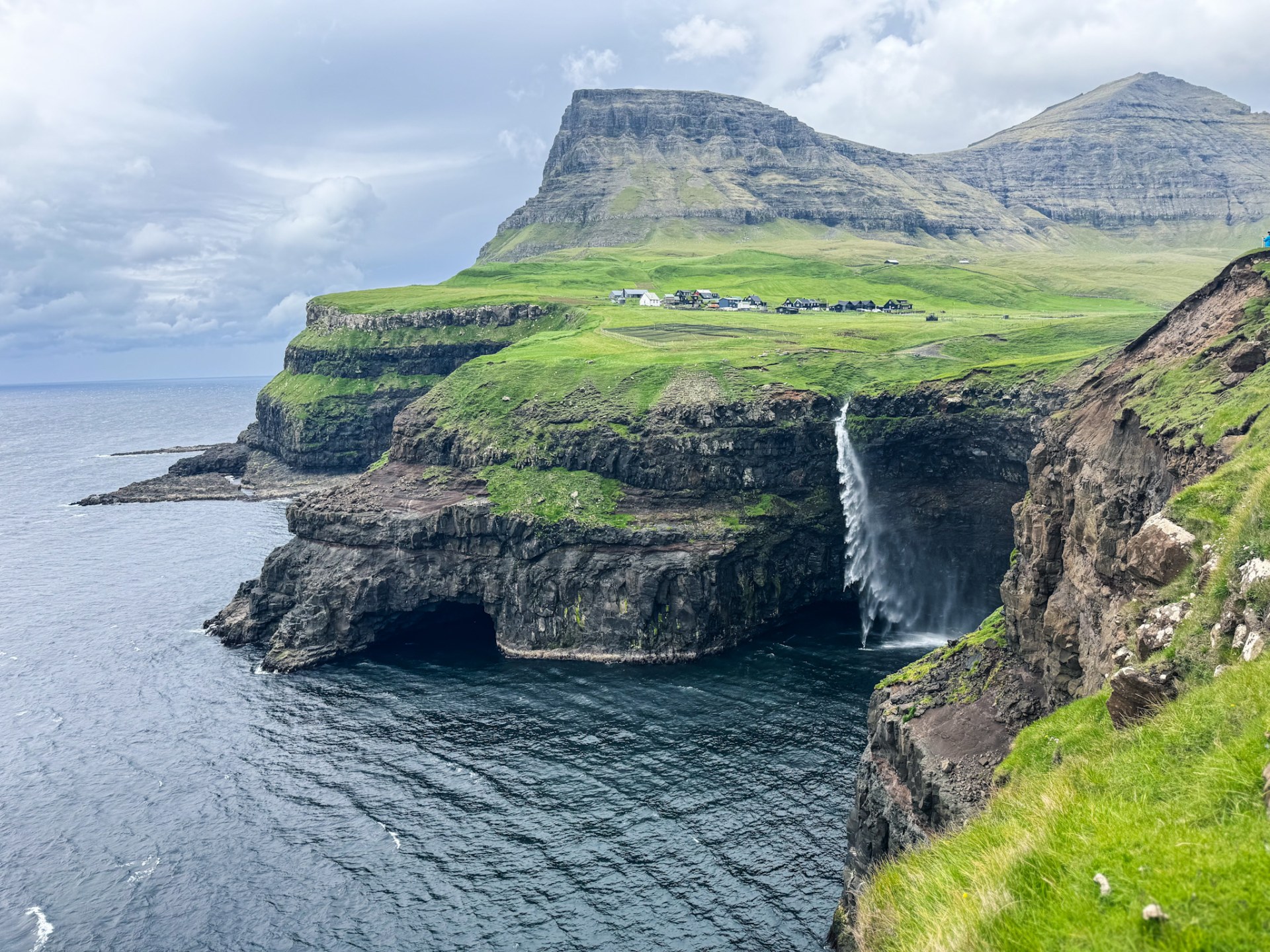
Day 3: Víkar Cliffs Hike from Vatnsøyrar
On our final full day on Vágar, we set off toward the quiet inland village of Vatnsøyrar and hiked to the dramatic Víkar cliffs – a windswept, remote stretch that felt like stepping into a living painting. Each step took us deeper into the landscape and further away from everything else.
This route offered a different kind of grandeur. The open expanse and mossy rock outcrops gave us a sense of the scale and solitude that defines the Faroese landscape. Vast, untamed, and hauntingly beautiful.
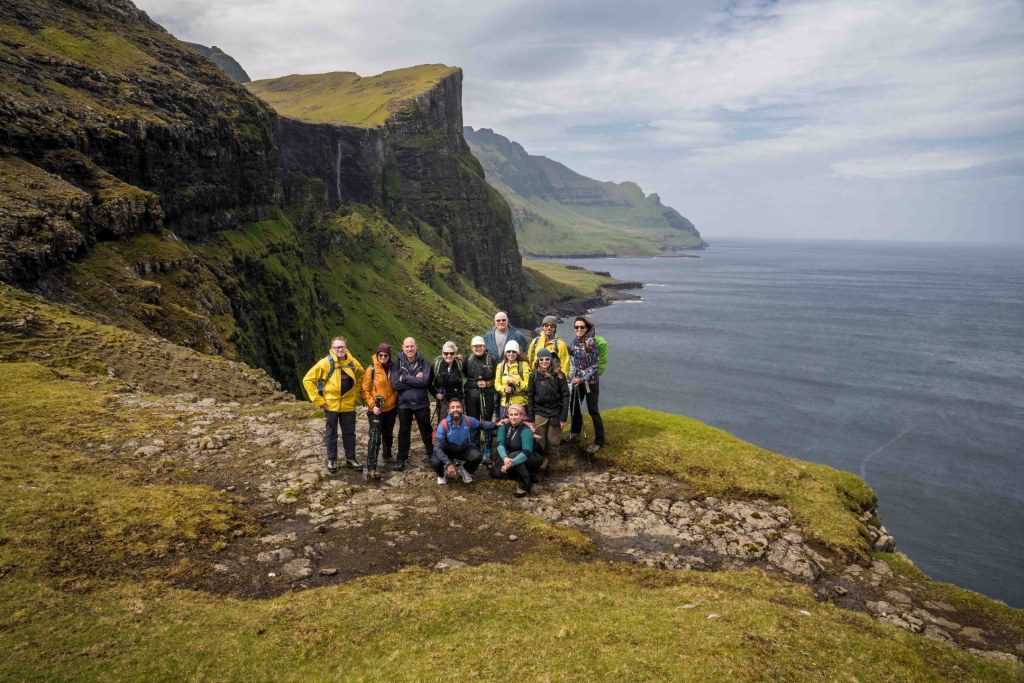
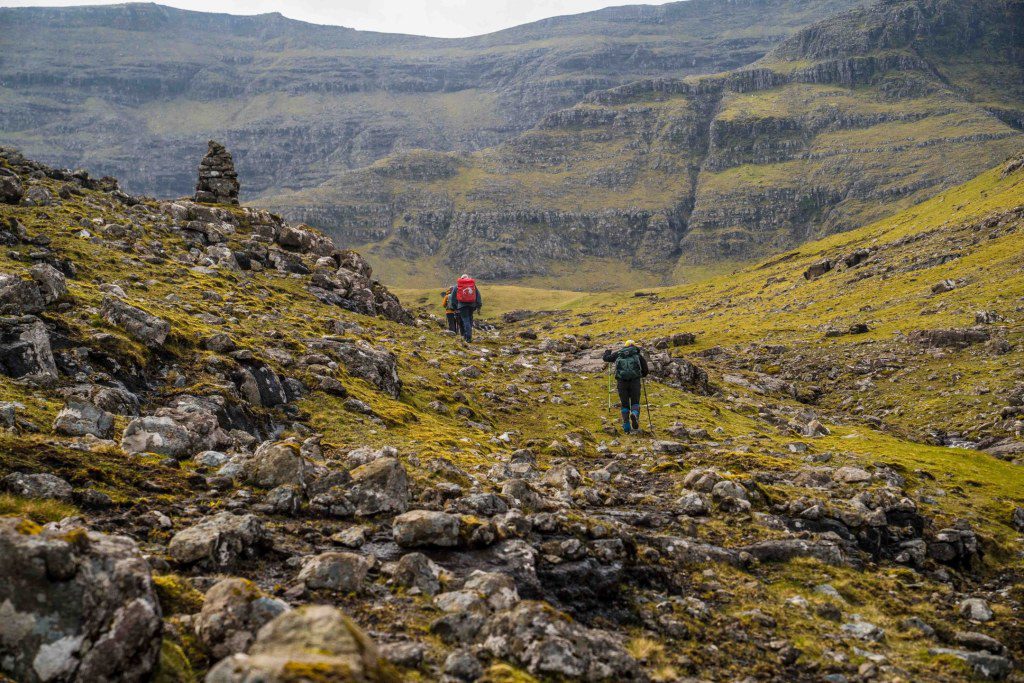
Day 4: Here Comes the MS Tórshavn / Vestmanna Cliffs and the Saksun to Tjørnuvík Traverse
No expedition is complete without a few twists! Our usual expedition sailboat for our Faroe Islands hiking and sailing expeditions, Norðlýsið, was undergoing repairs that took longer than expected. Fortunately, and with only a few days’ notice, a worthy substitute was found aboard the MS Tórshavn – and what a ship she turned out to be!
The MS Tórshavn is a historic Danish vessel that was built in the 1940s, with decades of rescue missions and hospital runs in her bones. The ship was refitted from retirement by a group of locals who now operate it as a volunteer-run cultural icon. MS Tórshavn is well-loved, steady, humble, and full of stories.

Captain John Andrews, engineer Frits, and sailor Rúna welcomed us aboard like family. The dinghy boat, built by the crew, was more rigid, tougher than most, and capable of landing in places we had never attempted before. Each night, we shared fish feasts on the wooden deck, and on our last night at sea, a fisherman friend delivered freshly caught crab that turned into one of the most memorable meals of the trip.
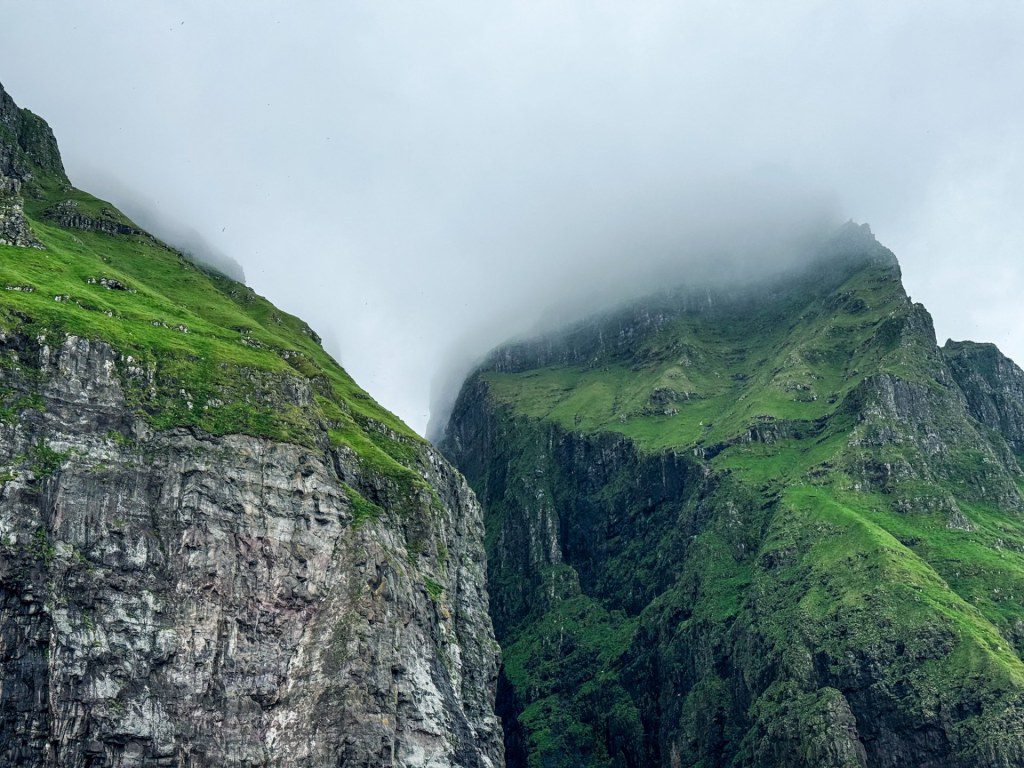
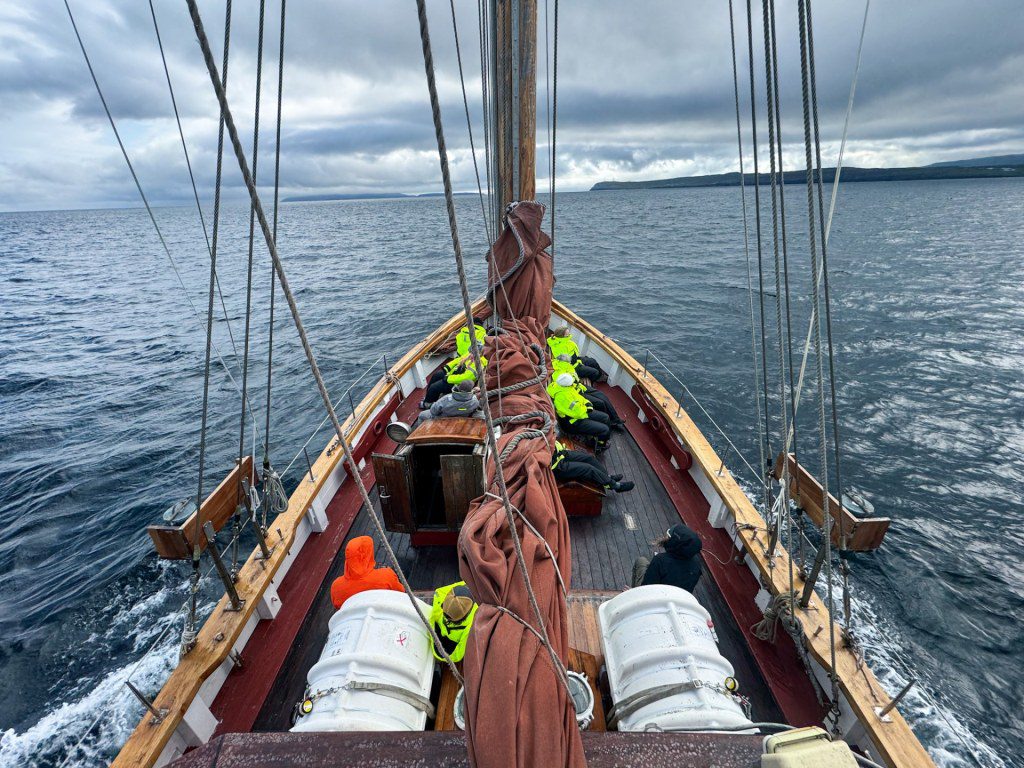
With our new floating home for the voyage, we sailed to Streymoy Island along the towering Vestmanna cliffs, where the sea has carved deep into the rock over thousands of years. The sheer scale of this section on the journey is humbling – towering stone walls, nesting seabirds, and the kind of raw exposure that makes you feel both insignificant and very much alive.
We eventually turned toward Saksun Beach, where our shore landing was anything but simple. With shifting sandbanks making a direct approach to the sheltered lagoon near impossible, we had to pull ashore near the cliffs where we carefully scrambled up slippery rocks to reach an old, rope-assisted trail. From there, we descended to the black-sand beach and followed the edge of the tidal lagoon inland, walking beneath grassy slopes and steep rock walls until we reached the village of Saksun.
Our inland hike from Saksun to Tjørnuvík crossed highland passes wrapped in mist, with seabird calls echoing across the hills and the roar of the distant sea returning as we descended toward the coast once more.
After our hike, we returned to the ship and continued sailing north toward Eiði, but with the Danish royal boat docked in the harbour, we adjusted course and made our next stop in Haldarsvík instead, so as to not impose on the Danish King and Queen.
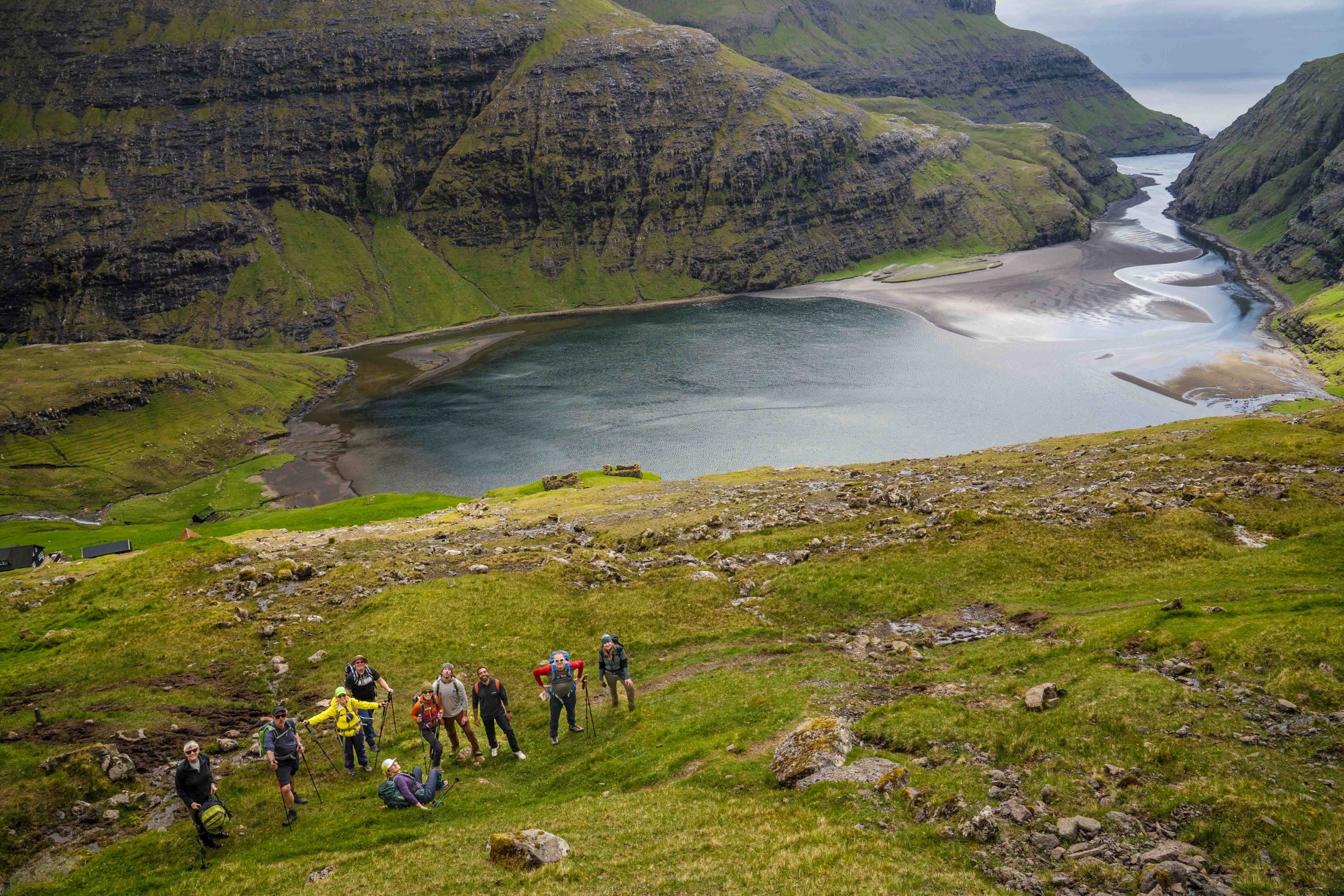
Day 5: Gjógv and the Hidden Trail to Ambadalur
We set off in the morning from Haldarsvík, sailing up the coast of Eysturoy Island past the legendary sea stacks known as The Giant and the Witch. According to Faroese legend, these two towering rocks were once trolls sent from Iceland to drag the Faroe Islands home, but they were caught by the rising sun and turned to stone, and are now frozen forever, stuck in the crashing surf.
As we cruised north, we passed the base of Bugvin, the tallest sea stack in the Faroes, rising like a jagged sentinel from the waves. In the distance, the island’s highest peak, Slættaratindur, loomed behind a curtain of dense clouds.
We made landfall in Gjógv, on Eysturoy Island, a village carved into the coastline with one of the Faroe Islands’ most picturesque natural harbours. From there, we set off on a trail known only to locals – a secret path to Ambadalur that twisted through vertical cliffs and soft green valleys. It was the kind of solitude you rarely find in our world of mapped trails. A trail without any signposts. A view with no crowd. And a gift we won’t forget.
After our day hike, we returned to the MS Tórshavn and sailed south to Klaksvík, where we anchored for the night.
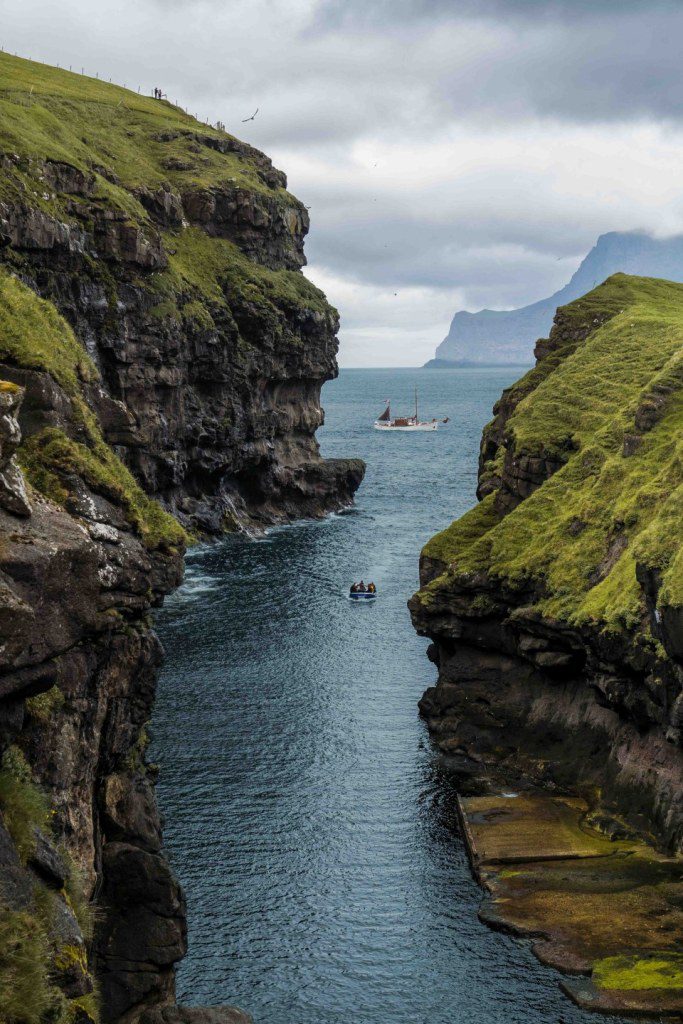

Day 6: Kalsoy to the Kallur Lighthouse / Across to Nólsoy
Our next stop was Kalsoy, an island known for its fog, wind, and ghostly Faroese atmosphere.
We hiked to the Kallur lighthouse, where the visibility dropped to nearly nothing, as if this place wanted to remain a mystery. We descended into Mikladalur, where we met the sea again at the Kópakonan statue.


In Faroese legend, Kópakonan – the Seal Woman – was a seal who came ashore once a year to shed her skin and dance in human form. One year, a farmer from Mikladalur stole her seal skin, which trapped her on land and forced her into marriage. Though she eventually escapes back to the sea, the story turns dark. After the villagers killed her seal husband and children, she cursed the island, vowing that so many men would drown their bodies could circle Kalsoy hand-in-hand. The statue of Kópakonan, rising from the surf in Mikladalur, stands as a haunting reminder of the myth and the sea’s unforgiving nature.
The Kópakonan statue was our pickup point with the MS Tórshavn, and was it ever tricky! The shoreline offered little shelter and the constant swell made landing difficult, especially for our small dinghy. But with the steady hands and good timing of our crew, we pulled it off and were soon back aboard the MS Tórshavn.
From there, we rode the currents south and made record time to Nólsoy. This was Captain John’s first time back since the 1970s! We watched as he stepped off the dock and reconnected with old friends. Seeing him revisit his past felt like the perfect full circle conclusion to our expedition. The air was thick with salt, fog, and an overwhelming sense of nostalgia.
We capped off the night with a delicious feast of fresh fish and piles of fresh crab, generously gifted to us by a local fisherman, and enjoyed our last dinner aboard the MS Tórshavn together.
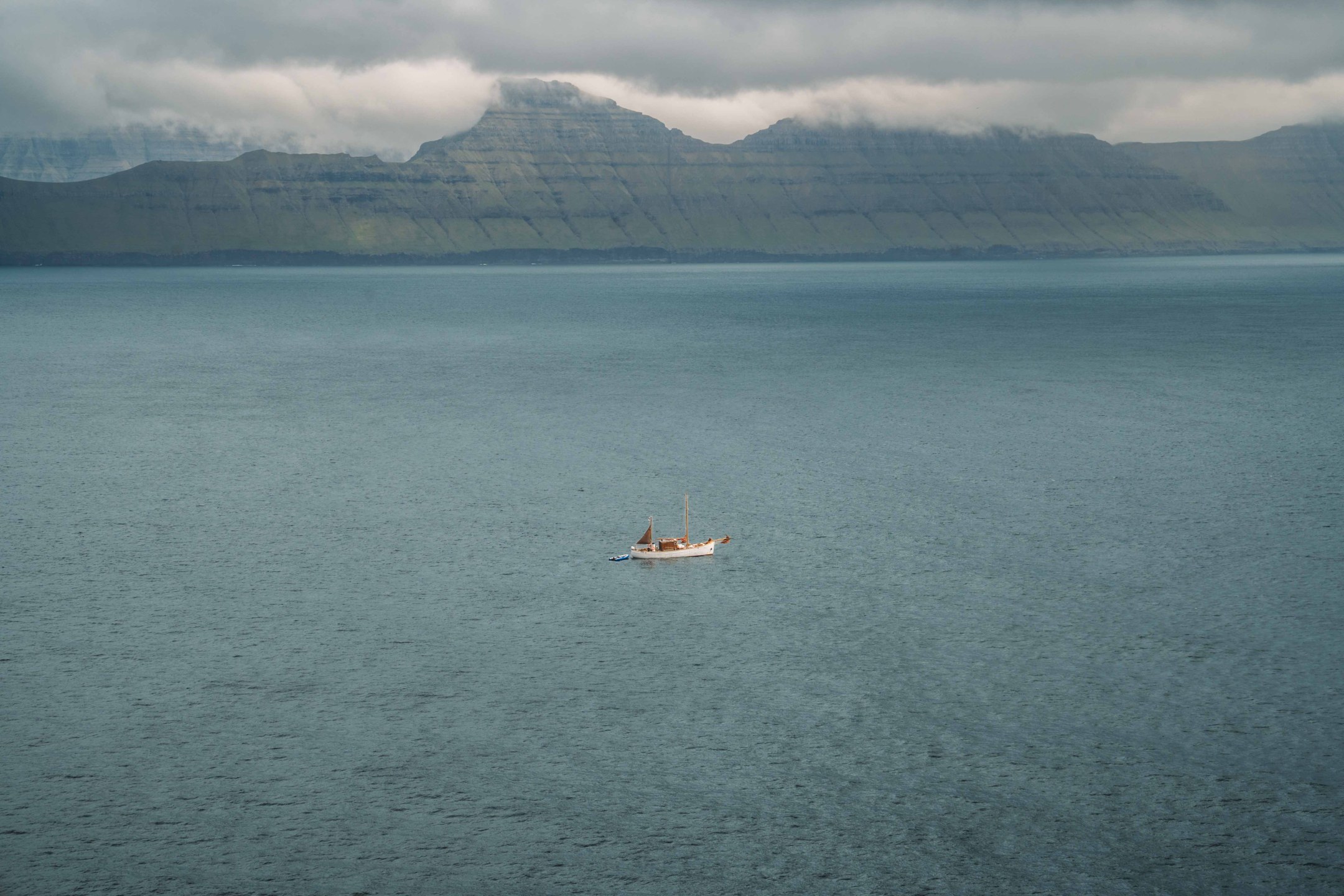
Day 7: Across Nólsoy – Past and Present – to Tórshavn
Our final hike of the expedition took us across the island of Nólsoy, from the village to the far lighthouse. Dense fog once again wrapped the land, giving the whole crossing a kind of cinematic quiet.
We crossed the entire island on foot, navigating dense fog that once again wrapped the land, from village to lighthouse, giving the whole crossing a kind of cinematic quiet. When we emerged on the far shore, our trusted dinghy was already in the bay, bobbing in the swell as it waved us a cheerful hello. It was a near-perfect final hike, capped by one of the most emotional moments of the trip.

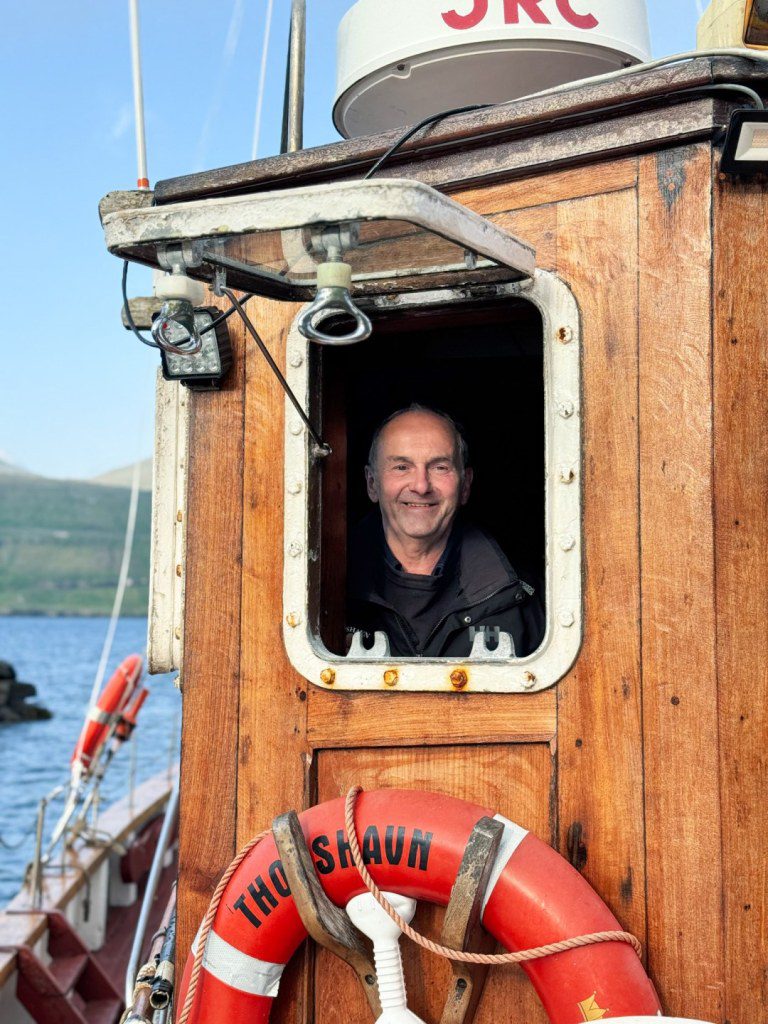
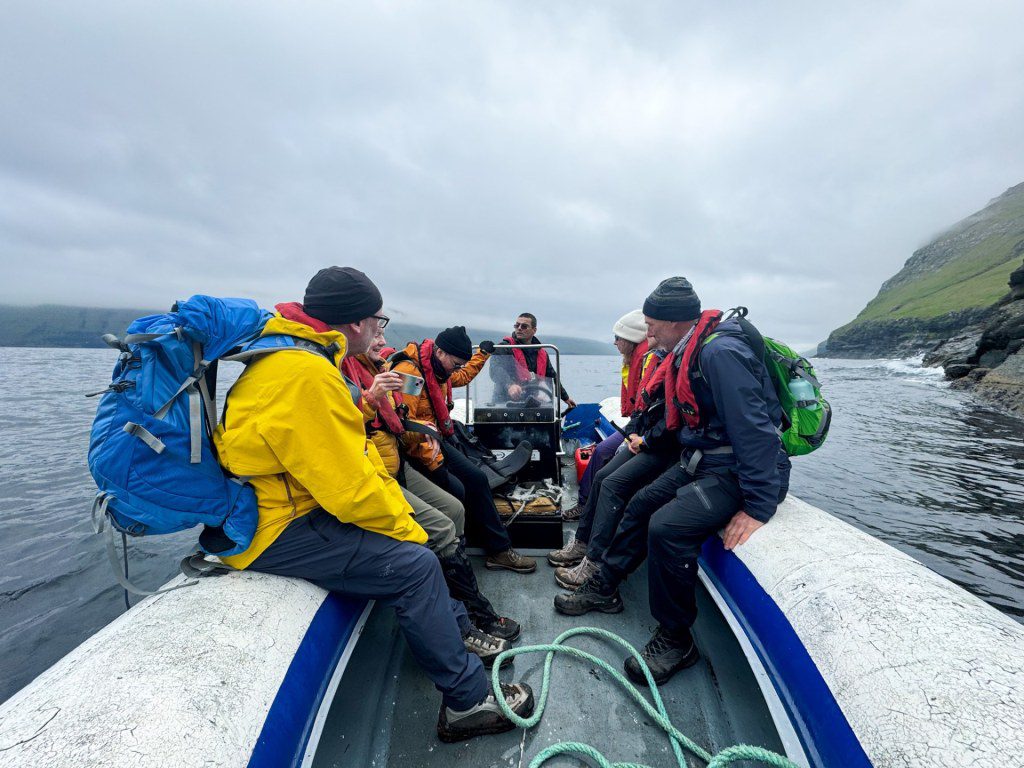
From there, we boarded the MS Tórshavn one last time and made our final crossing back to Tórshavn, arriving in the evening. We wrapped up the day with a celebratory dinner at a local restaurant, a fitting way to mark the end of the journey before heading home.
Day 8: The Final Day
After breakfast in Tórshavn, it was time to say our goodbyes! The gear was packed, the legs (and sea legs) a little sore, we parted ways with salt in our hair, lifelong stories to share, and a quiet satisfaction of completing our Faroe Islands hiking adventure together!
Our Last Voyage in the Faroe Islands
After several unforgettable seasons exploring the North Atlantic’s wildest outposts, 2025 marked our final expedition to the Faroe Islands.
These volcanic cliffs, laced with ancient footpaths and fishing legends, have long been a place of awe, humility, and deep connection for us. Our June expedition – the last of its kind – delivered near perfect weather, an incredible crew, and a fitting finale to a journey that’s given us so much over the years.
We’re concluding our Faroe Islands expeditions not because we fell out of love with the place, but because we believe in leaving places on a high note. We’re giving space for new stories, building new expeditions in even further and more remote regions, and letting the land breathe between them.
As part of this shift, we’re excited to share that the Faroe Islands tour dates will now be replaced with a new expedition in the Hornstrandir Nature Reserve, deep in Iceland’s remote Westfjords – one of the most untouched wilderness areas in the North Atlantic.
We want to thank each and every one of you who joined us in the Faroe Islands over the years! You helped make these expeditions more than tours – you made them unforgettable shared memories that will last a lifetime. The trails will always be there. And so will the stories we shaped with each step we took across them.



